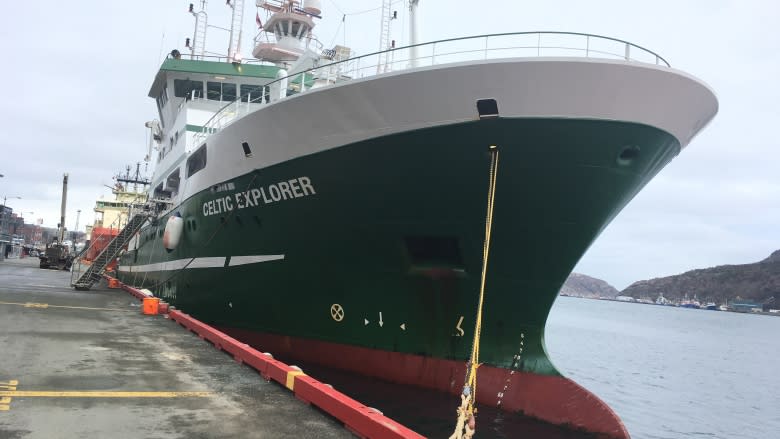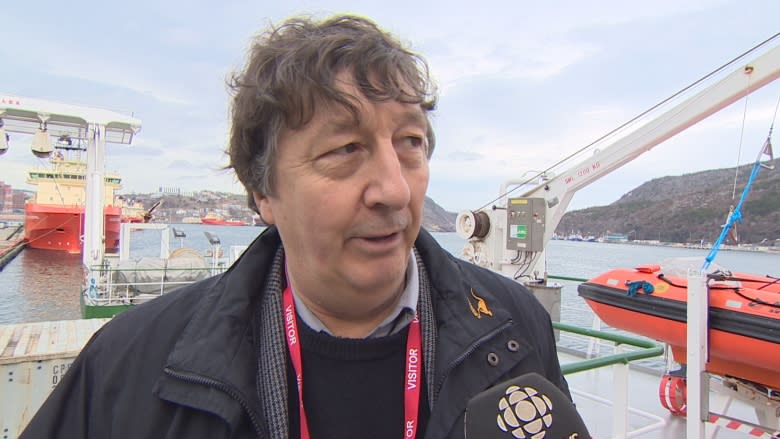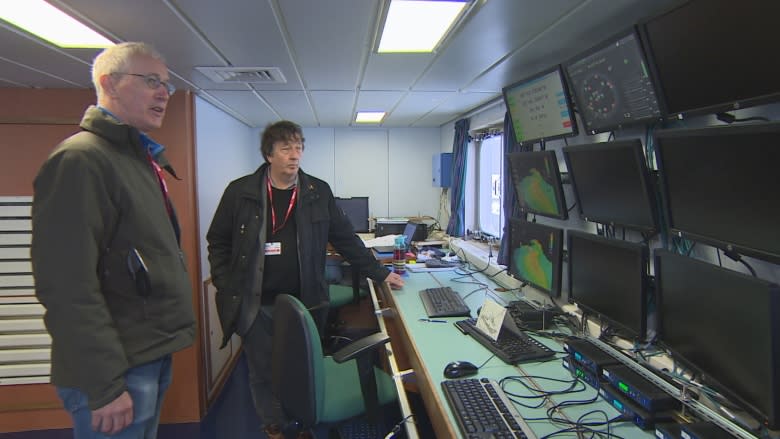Human-made chemicals found in higher quantities in deep ocean
Human-made chemicals are penetrating deeper into the North Atlantic, a new study has found.
Remember CFCs? Production of the ozone-depleting chemicals was largely phased out globally in 1994.
But almost 25 years later, researchers are finding them in increasing amounts in the deeper, "older" parts of the ocean.
Scientists from six countries crossed the North Atlantic from St. John's to Galway, Ireland, over the past month aboard the research vessel Celtic Explorer.
The researchers were studying the presence of human-made chemicals as well as temperature, salinity, acidity and nutrient and carbon dioxide levels. The expedition is part of an international effort to periodically monitor physical, chemical and biological changes in the oceans.
The scientists took water samples from at least 24 different depths, including the sea floor, every 30 nautical miles of the roughly 3,100-kilometre journey. The deepest point of measurement was about 4,500 metres.
Ocean CFCs increasing
Doug Wallace, a chemical oceanographer at Dalhousie University who led a Dal team aboard the vessel, said the stretch from Newfoundland and Labrador to Ireland was last monitored two decades ago.
"We were able to measure much higher concentrations of CFCs than we measured 20 years ago," Wallace said.
"It's true that in the atmosphere they've stopped increasing — in fact, they've started to go down very slowly in the atmosphere. But the ocean is still catching up with the increase over the last 60, 70 years," he said.
"The ocean takes a lot longer to change than the atmosphere. So what we see in the deep water is the concentrations are still increasing because the CFCs are still being mixed downwards from the surface into the deep."
CFCs are a relatively easy way to identify the "age" of water in the ocean. Scientists call water that's at the ocean's surface "young," while the oldest water in the ocean, found in the deep Pacific, is about 1,000 years old.
Tracking the depth of CFCs helps researchers determine how old the water is. The expedition confirmed that the CFCs are being found at deeper levels in the ocean.
More fossil fuel-related carbon
Scientists aboard the Celtic Explorer also found that carbon dioxide levels in the ocean are greater than they were 20 years ago.
There are many natural sources of carbon dioxide, including the simple decomposition of organic material and plant and animal respiration. But burning fossil fuels is one of the main sources of carbon dioxide emissions, which contribute to global warming.
The researchers were able to analyze the carbon isotopes in the water to determine whether fossil fuels were the source of the carbon dioxide.
"We've already compared those numbers and we can see that sure enough, in the top 2,000 metres of the ocean, the carbon isotope composition is quite radically different than ... what it was 20 years ago, which is a clear indication that the carbon dioxide change is due to the uptake of fossil fuel carbon dioxide," Wallace said.
Absorption 'a double-edged sword'
So, is it worrisome that there's more carbon dioxide in the ocean?
"It's a double-edged sword," Wallace said.
On the one hand, the ocean taking up carbon dioxide from the atmosphere means less is left in the atmosphere to contribute to global warming. On the other hand, when carbon dioxide enters the ocean, it reacts chemically with water and causes the ocean to become more acidic.
"And that, we believe, is a threat to marine life," Wallace said.
The water samples collected on the recent trip further confirmed that ocean acidification is on the rise.
The expedition was led by the Marine Institute of Galway and the Dalhousie University-based Ocean Frontier Institute was a partner in the research.
The institute was created 2016 with the help of $220 million from the federal government and other private and public-sector organizations.




